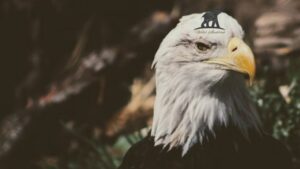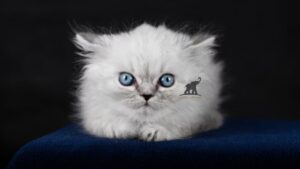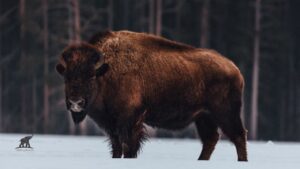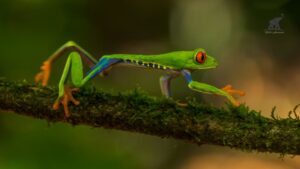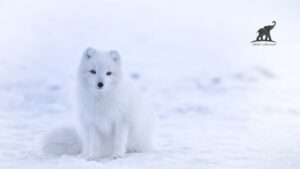Have you ever looked at a picture of an anteater and thought, “That is one surprisingly cute animal”? You’re not alone. The unique charm of an anteater cute appearance has captivated people around the world, turning this unusual creature into an internet sensation.
With their long snouts, fluffy tails, and delightfully awkward movements, anteaters possess a distinct appeal. They challenge our typical definitions of what makes an animal adorable, proving that cuteness comes in all shapes and sizes. This article explores every facet of what makes an anteater cute, from their physical traits to their gentle nature.
Anteater Quick Facts
To understand the full picture of these fascinating animals, let’s look at some key details.
| Feature | Description |
| Common Name | Giant Anteater, Silky Anteater, Tamandua |
| Scientific Name | Myrmecophaga tridactyla (Giant) |
| Habitat | Tropical forests, grasslands, and savannas of Central and South America |
| Diet | Primarily ants and termites |
| Size | Varies by species; Giant Anteaters can reach 7 feet long |
| Lifespan | Up to 16 years in the wild, longer in captivity |
| Conservation Status | Vulnerable (Giant Anteater) |
The Unmistakable Anatomy of Cuteness
At first glance, anteaters seem like a patchwork of different animals. They have a snout that seems impossibly long, a tail that could belong to a squirrel on steroids, and claws that look fierce. Yet, this combination is precisely what makes an anteater cute.
The Famous Snout: More Than Just a Nose
The most defining feature of an anteater is its long, tubular snout. While it might look a bit goofy, it’s a highly specialized tool for finding food. It houses an incredibly long tongue—up to two feet long in giant anteaters—that can flick in and out 150 times per minute.
The endearing quality of their snout comes from its almost cartoonish proportions. It gives them a perpetually curious and slightly bewildered expression that many find irresistible. This unique facial structure is a huge part of why so many people find an anteater cute.
That Fluffy, Fabulous Tail
The giant anteater’s tail is a magnificent work of art. It’s large, fan-like, and covered in long, coarse hair. They often use it as a blanket, wrapping it around themselves for warmth and camouflage while they sleep.
Seeing a giant anteater tucked under its own tail is an incredibly heartwarming sight. It adds a layer of vulnerability and softness to their appearance, reinforcing the “anteater cute” perception. It’s a built-in comfort object that makes them seem cozy and sweet.
Awkwardly Adorable Movements
Anteaters walk on their knuckles, tucking their long front claws away to keep them sharp for digging into termite mounds. This results in a shuffling, somewhat clumsy gait that is surprisingly endearing.
This unique way of moving makes them look like they’re carefully navigating the world, adding to their gentle giant persona. Watching a video of an anteater cutely ambling along is enough to bring a smile to anyone’s face. The way they carry themselves is a significant contributor to their overall charm.
The Gentle Giants: A Look at Anteater Personality
Beyond their looks, the temperament of anteaters adds to their appeal. Despite their formidable claws, they are generally solitary and non-aggressive animals.

A Shy and Peaceful Nature
Anteaters spend most of their days peacefully searching for food or resting. They are shy creatures that prefer to avoid confrontation. This gentle disposition is a major reason people find them so lovable. An animal that looks so unique yet behaves so peacefully creates a powerful emotional connection.
Their quiet lifestyle makes every glimpse of them feel special. It’s this serene quality that enhances the anteater cute image, presenting them as tranquil inhabitants of the forest. The idea of this peculiar-looking animal just wanting to be left alone is deeply touching.
The Heartwarming Bond Between Mother and Baby
Nothing amplifies the cuteness factor like a baby animal. A baby anteater, called a pup, is born after a gestation period of about six months. For the first year of its life, the pup rides on its mother’s back.
This behavior is not just practical—it’s incredibly sweet. The tiny pup clings tightly to its mother’s fur, perfectly camouflaged against her coat. Seeing this tender bond showcases a softer, maternal side to the anteater, making the duo irresistibly cute. The image of a baby anteater cutely hitching a ride is one of nature’s most delightful scenes.
The Internet’s Obsession: Anteaters in Pop Culture
The internet has played a massive role in cementing the anteater cute phenomenon. From viral videos to beloved memes, these animals have found a special place in online culture.

Viral Moments and Social Media Stars
Videos of anteaters performing their “T-pose” to appear larger and more intimidating have become internet gold. Instead of looking scary, they look like they are asking for a hug, which has led to countless shares and comments about their adorable nature. Seeing an anteater cutely standing on its hind legs is a guaranteed hit online.
Zoos and conservation centers often share footage of their resident anteaters, showcasing their personalities. One famous anteater, “Stump,” from the San Diego Zoo, became an internet celebrity for his charming antics. The public’s reaction has been overwhelmingly positive, with many comments focusing on how an anteater cutely interacts with its keepers.
What People Are Saying: Reviews from Anteater Fans
While you can’t review an anteater on Yelp, online forums and social media are filled with “user reviews” that highlight their charm.
- “I never thought an anteater cute would be a thing, but after seeing one at the zoo, I’m a believer. They are so much more graceful and sweet in person!” – Reddit User
- “Rating: 5/5 stars. The long snoot is 100% adorable. The fluffy tail is a bonus. Would recommend watching anteater videos for instant happiness.” – Twitter Comment
- “The way the baby anteater rides on its mom’s back is the most precious thing I’ve ever seen. It proves that an anteater cuteness is off the charts.” – Instagram Follower
These informal reviews show a genuine public affection, reinforcing that the appeal of an anteater cute appearance is widespread. The consensus is clear: these animals are wonderfully charming. The sheer volume of content proves that the anteater cute trend is here to stay.
Conservation: Protecting the Cuteness
The giant anteater is listed as a vulnerable species, facing threats from habitat loss and human conflict. Their slow movement and poor eyesight make them susceptible to road accidents and predators.
Supporting conservation efforts is crucial to ensure future generations can appreciate these unique animals. Organizations are working to protect their habitats and educate local communities. By supporting these groups, you help protect every anteater cute feature for years to come. Every donation or share of information contributes to the survival of these magnificent creatures.
Protecting these animals means we can continue to marvel at their peculiar charm. It’s a reminder that every creature, no matter how unusual, plays a vital role in its ecosystem. The fight to save them is a fight to keep the world a more interesting and adorable place. We must ensure the survival of every anteater cute pup and its family. The conversation about the anteater cute phenomenon must include conservation.
Frequently Asked Questions (FAQs)
Are anteaters friendly to humans?
Anteaters are generally not aggressive, but they are wild animals. They have powerful claws and will defend themselves if they feel threatened. It’s always best to admire them from a safe distance.
Why do anteaters have such long tongues?
A: Their long, sticky tongue is a perfect tool for reaching deep into ant and termite nests. It’s covered in tiny spines and sticky saliva, allowing them to slurp up hundreds of insects in a single minute.
Is it true that anteaters don’t have teeth?
A: Yes, it’s true! Anteaters are part of a group of mammals called Xenarthra, which means “strange joints.” They don’t have teeth and instead use their muscular stomachs to grind up insects.
What makes a baby anteater so special?
A: Besides being incredibly small and fluffy, the way a baby anteater cutely clings to its mother’s back for up to a year is a unique and endearing behavior among mammals. This sight alone makes a strong case for the anteater cute argument.
Can you have an anteater as a pet?
A: No, anteaters should not be kept as pets. They have very specific dietary needs and require a lot of space. They belong in the wild or in the care of professional zoos and conservation centers. The charm of an anteater cute appearance is best appreciated in its natural or protected habitat.
Admin Recommendation
Cottonmouth Snakes in North Carolina (NC): Key Facts
The Fascinating World of Arctic Fox Fur



